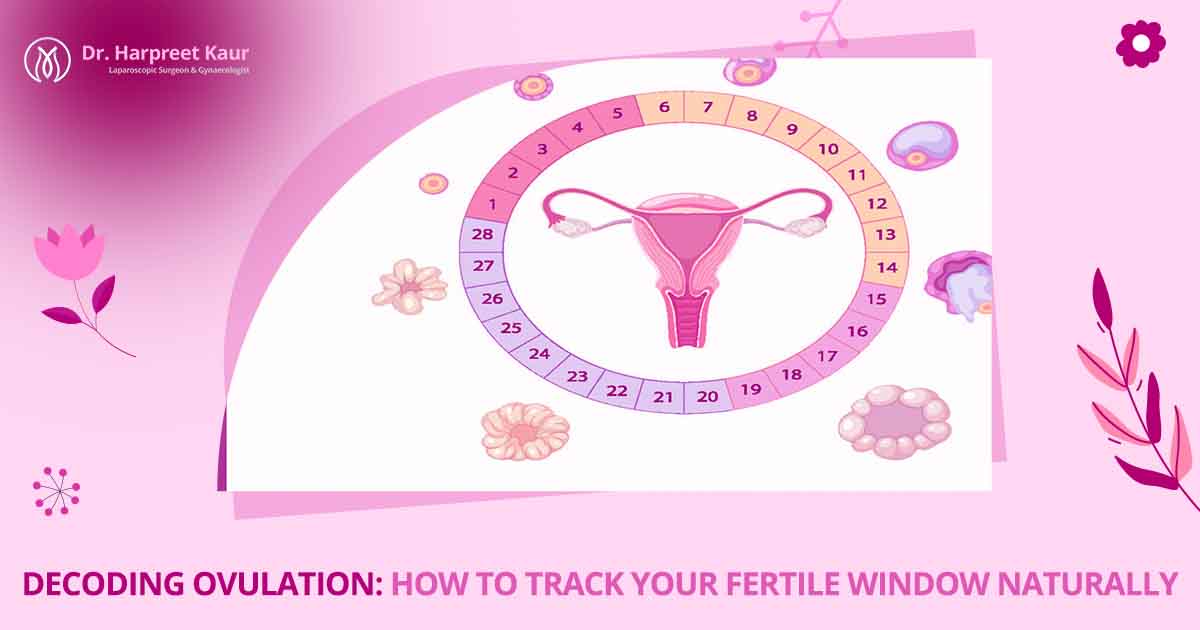Clinic Location
Care n Cure Clinic, Nayapalli, Near Hotel Crown, Bhubaneswar
For Consultation
+91 7008110200
+91 9090910009
Work Hours
Mon - Fri : 05:30 - 07:30
- Home
- About Doctor
- Services
Postnatal care
Gynaecological services
- General Consultatnt
- Adolescent Clinic
- Well Women Clicnic
- Gynaecological Surgeries
- Gallery
- Your Pregnancy
- Training
- Contact
- Feedback
- Blog
- Home
- About Doctor
- Services
Postnatal care
Gynaecological services
- General Consultatnt
- Adolescent Clinic
- Well Women Clicnic
- Gynaecological Surgeries
- Gallery
- Your Pregnancy
- Training
- Contact
- Feedback
- Blog
- Home
- About Doctor
- Services
Postnatal care
Gynaecological services
- General Consultatnt
- Adolescent Clinic
- Well Women Clicnic
- Gynaecological Surgeries
- Gallery
- Your Pregnancy
- Training
- Contact
- Feedback
- Blog
Decoding Ovulation: How to Track Your Fertile Window Naturally

For many women, the journey to conception begins with understanding the body’s natural rhythm. The menstrual cycle is more than just monthly bleeding — it carries signals about fertility and reproductive health. The most important part of this cycle is ovulation, the window when conception is most likely. Learning the art of fertile window tracking can make the process of trying to conceive more intentional and less stressful. According to Dr Harpreet Kaur, ovulation tracking empowers women to take charge of their reproductive health and improves the chances of achieving pregnancy naturally.
Understanding Ovulation and the Fertile Window
Ovulation occurs when a mature egg is released from the ovary and is ready for fertilization. This typically happens around the middle of a 28-day cycle, though timing can vary depending on individual cycle length. The egg survives for only 12–24 hours, but since sperm can live for up to five days, the fertile window usually spans six days: five days before ovulation and the day of ovulation itself.
Recognizing this window is critical for those who want to conceive or simply better understand their menstrual health.
Why Trying to Conceive After 35 Requires Planning
Trying to conceive after 35 may involve a bit more intention and preparation compared to younger years. Planning is essential because:
- It helps optimize natural fertility before turning to medical intervention.
- It ensures pre-existing health conditions are addressed before pregnancy.
- It allows women to understand realistic timelines and expectations
Why Fertile Window Tracking Matters
- Maximizes chances of conception: Having intercourse during the fertile window greatly increases the likelihood of pregnancy.
- Reveals cycle irregularities: Tracking can highlight irregular cycles or hormonal imbalances.
- Supports overall health awareness: Observing ovulation patterns provides valuable insight into reproductive health.
Natural Methods of Ovulation Tracking
1. Basal Body Temperature (BBT) Monitoring
Your basal body temperature slightly rises (by about 0.5°F) after ovulation due to hormonal shifts. Recording your temperature every morning before getting out of bed helps establish a pattern over time.
- How it helps: Confirms ovulation has occurred.
- Best practice: Use a digital basal thermometer and chart readings daily.
2. Cervical Mucus Observation
Cervical mucus changes throughout the menstrual cycle.
- Before ovulation: Sticky or creamy consistency.
- During ovulation: Clear, stretchy, and slippery — resembling raw egg whites.
This fertile mucus creates the ideal environment for sperm survival and movement.
3. Ovulation Predictor Kits (OPKs)
These at-home kits detect the surge in luteinizing hormone (LH) that occurs 24–36 hours before ovulation.
- Advantage: Offers an easy, reliable indicator of when ovulation is imminent.
- Note: Works best when combined with other methods like cervical mucus tracking.
4. Fertility Awareness Method (FAM)
By combining BBT, cervical mucus monitoring, and cycle tracking, women get a complete picture of their fertile window. With consistency, FAM is one of the most effective approaches to natural ovulation tracking.
Lifestyle Factors That Influence Ovulation
Dr Harpreet Kaur emphasizes that lifestyle choices play a vital role in ovulation regularity and fertility health. Factors that may affect ovulation include:
- Stress: Chronic stress can delay or suppress ovulation.
- Nutrition: A balanced diet rich in lean proteins, whole grains, and healthy fats supports hormone balance.
- Exercise: Moderate activity helps maintain a healthy weight, while excessive exercise may disrupt cycles.
- Sleep patterns: Poor sleep can impact hormonal regulation and ovulation timing.
Signs That Indicate Ovulation
Beyond formal tracking methods, your body gives natural cues of ovulation:
- Mild pelvic or abdominal pain (mittelschmerz).
- Increased libido around mid-cycle.
- Breast tenderness due to hormonal changes.
Recognizing these signs, alongside structured ovulation tracking, provides a clearer picture of fertility patterns.
When to Consult a Doctor
If you have been tracking your fertile window for several months without success in conceiving, it may be time to seek medical guidance. Dr Harpreet Kaur advises consulting a gynecologist if:
- Your cycles are irregular or absent.
- You are over 35 and have been trying for 6 months without conception.
- You experience severe pelvic pain or abnormal bleeding.
Conclusion
Fertile window tracking is more than a family-planning tool — it’s an empowering way to connect with your body. By using methods like BBT monitoring, cervical mucus observation, and ovulation predictor kits, women can accurately pinpoint their most fertile days. With insights from Dr Harpreet Kaur, it’s clear that ovulation tracking not only enhances the chances of pregnancy but also helps women take charge of their reproductive health

